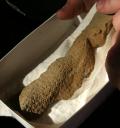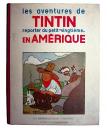A play, inspired by current events, a play that for 6 decades swung like strange fruit from the wide, gnarled branches network censorship, a play that has now drawn one ragged breath in Ithaca College.
Okay so I reek at trying to copy Rod Serling’s style. Hopefully the actors at Ithaca College who have finally performed “Noon on Doomsday”, Serling’s play inspired by the lynching of Emmet Till.
Serling’s Till story was initially accepted and approved by the producers of ABC’s “The United States Steel Hour,” for which he’d already written several well-received scripts.
But when it was reported that Serling was writing about the Till case, thousands of protests poured in, mostly from members of the White Citizens Council, a Southern white supremacist organization, said Johnston.
Serling produced three “Doomsday” scripts. The first two were for the stage, said Johnston. In the original, the victim was a college-aged black man. Serling’s language and descriptions also were more coarse and idiomatic in the original version, she said.
When it ran on television in April 1956, “Noon on Doomsday” was so watered down as to be meaningless, Johnston said.
The location was changed to New England. The murdered Jew was transformed into an unnamed foreigner. The word “lynch” was excised from the script, as was anything deemed “too Southern” in connotation. The villain was softened to “just a good decent, American boy momentarily gone wrong,” Johnston said.
Two years later, Serling tried again to examine the extreme consequences of prejudice enmeshed in Till’s saga. His new effort was titled “A Town Has Turned to Dust,” and he offered it to CBS for “Playhouse 90.”
But CBS executives again eviscerated the script — changing the central character to a Mexican boy who falls in love from afar with a white shopkeeper’s wife[.]
Ithaca College has a huge Rod Serling archive.
 The Museum of Antigua and Barbuda is raising funds to replace 52 ailing windows before hurricane season.
The Museum of Antigua and Barbuda is raising funds to replace 52 ailing windows before hurricane season.

